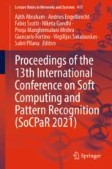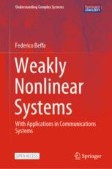Search
Search Results
-
Self-Supervised Representation Learning for Multivariate Time Series of Power Grid with Self-Distillation Augmentation
In recent years, a wealth of sensors have been configured in power grid scenarios to detect abnormal conditions so that the intelligent level of...
-
Deep Representation-Based Fuzzy Graph Model for Content-Based Image Retrieval
Image retrieval involves searching for images relevant to a user-provided query image. In this paper, we aim to develop a graph-based model with deep...

-
High-order direct parametrisation of invariant manifolds for model order reduction of finite element structures: application to generic forcing terms and parametrically excited systems
The direct parametrisation method for invariant manifolds is used for model order reduction of forced-damped mechanical structures subjected to...

-
How to compute invariant manifolds and their reduced dynamics in high-dimensional finite element models
Invariant manifolds are important constructs for the quantitative and qualitative understanding of nonlinear phenomena in dynamical systems. In...

-
Robust tensor decomposition via orientation invariant tubal nuclear norms
Aiming at recovering an unknown tensor (i.e., multi-way array) corrupted by both sparse outliers and dense noises, robust tensor decomposition (RTD)...
-
Enhanced LPQ Based Two Novel Blur Invariant Face Descriptors in Light Variations
Among numerous local descriptors persisting in literature, LPQ is one of most influential blur invariant descriptor. But when high content blurring...
-
Knowledge representation for explainable artificial intelligence
Alongside the particular need to explain the behavior of black box artificial intelligence (AI) systems, there is a general need to explain the...

-
Invariant Feature-Based Dynamic Scene Classification Using the Optimized Convolution Neural Network
The classification of a scene from digital images has drawn great attention because of its wide applications in real world. Over more than 40 years,...
-
Passive Global Localisation of Mobile Robot via 2D Fourier-Mellin Invariant Matching
Passive global localisation is defined as locating a robot on a map, under global pose uncertainty, without prescribing motion controls. The majority...

-
Gait recognition based on multi-feature representation and temporal modeling of periodic parts
Despite the ability of 3D convolutional methods to extract spatio-temporal information simultaneously, they also increase parameter redundancy and...

-
Evolutionary-based generation of rotation and scale invariant texture descriptors from SIFT keypoints
To describe image data, prominent keypoints are commonly detected before running an extraction process to generate a feature vector. However,...

-
Smartphone Invariant Indoor Localization Using Multi-head Attention Neural Network
Smartphones together with RSSI fingerprinting serve as an efficient approach for delivering a low-cost and high-accuracy indoor localization...
-
A Triplet-loss Dilated Residual Network for High-Resolution Representation Learning in Image Retrieval
Content-based image retrieval is the process of retrieving a subset of images from an extensive image gallery based on visual contents, such as...

-
FPNs for Knowledge Representation and Reasoning: A Literature Review
Fuzzy Petri nets (FPNs) are a potential modeling technique for knowledge representation and reasoning of rule-based expert systems. To date, many...
-
Environment Invariant Feature Extraction Algorithm Based on Radio Frequency I/Q Data Distribution
With the development of the Internet of Things, more and more devices need to be connected to the network. Wireless networks are open, and the...
-
Domain-Invariant Latent Representation Discovers Roles
Discovering the roles of nodes in a network is important for solving various social issues. Role discovery aims to infer nodes’ roles from a network...
-
Hybrid Oriented FAST Rotated BRIEF and Non-Rotational-Invariant Uniform Local Binary Patterns for CBMIR
In recent decades, Content-Based Image Retrieval (CBIR) is an emerging topic, which assists the clinicians in performing fast diagnosis by conducting...

-
Improving Visual Perception of Artificial Social Companions Using a Standardized Knowledge Representation in a Human-Machine Interaction Framework
In Human-Machine Interaction for Artificial Social Companions, we must incorporate features that allow an agent to be capable of delivering a...

-
Composition of Weakly Nonlinear Time Invariant Systems
When building large systems, it’s common to construct them by combining smaller subsystems. To gain the ability to investigate such systems, in this...
-
Sparse Representation Based Face Recognition Using VGGFace
Face recognition is one of the most important applications of computer vision and it has been used in biometric, surveillance cameras and face...
